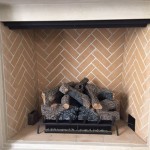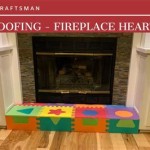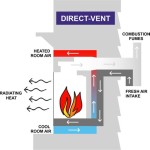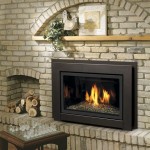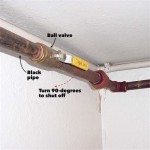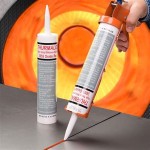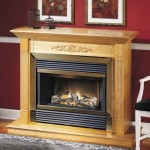Wall Hung Gas Fireplaces: A Comprehensive Guide
Wall hung gas fireplaces are gaining significant popularity as a modern and efficient heating solution for residential and commercial spaces. They offer a sleek aesthetic, space-saving design, and the convenience of gas fuel, making them an attractive alternative to traditional wood-burning fireplaces. This article provides a detailed examination of wall hung gas fireplaces, covering their advantages, installation considerations, safety features, operational aspects, and available options.
The appeal of wall hung gas fireplaces stems from their ability to seamlessly integrate into contemporary interior designs. Unlike conventional fireplaces that often require extensive structural modifications, wall hung units are designed for relatively straightforward installation on an existing wall. This characteristic makes them particularly well-suited for renovations and new construction projects where minimizing disruption and maximizing usable space are key priorities.
Furthermore, gas fireplaces offer a range of benefits over wood-burning alternatives. They eliminate the need for wood storage and handling, reduce emissions, and provide precise temperature control. The convenience of instant ignition and adjustable flame height further enhances the user experience. Wall hung gas fireplaces build upon these advantages by taking the aesthetics and space-saving potential a step further.
Advantages of Wall Hung Gas Fireplaces
Wall hung gas fireplaces present a compelling combination of aesthetic appeal, functional benefits, and ease of use. Their advantages extend beyond simple heating, contributing to the overall ambiance and value of a property.
Space Saving Design: A primary advantage of wall hung gas fireplaces is their space-saving design. By mounting directly on the wall, they eliminate the footprint associated with traditional fireplace hearths. This is particularly beneficial in smaller rooms or apartments where floor space is at a premium. The compact design allows for greater flexibility in furniture placement and room layout.
Modern Aesthetic: Wall hung gas fireplaces offer a clean, contemporary aesthetic that complements modern interior designs. Available in a variety of styles, finishes, and sizes, these fireplaces can be easily integrated into diverse architectural settings. From sleek, minimalist designs to more ornate and decorative models, there is a wall hung gas fireplace to suit various preferences. The visual appeal is further enhanced by realistic flame patterns and ember bed simulations, creating a cozy and inviting atmosphere.
Ease of Installation: Compared to traditional fireplaces, wall hung gas fireplaces generally require less extensive installation. While professional installation is recommended to ensure safety and compliance with local codes, the process is typically less disruptive and time-consuming than installing a conventional fireplace. The units are designed to be mounted on a wall using appropriate support brackets, and the gas line connection is usually straightforward. Venting options vary depending on the model, with direct vent systems being a common choice due to their safety and efficiency.
Efficient and Convenient Heating: Gas fireplaces offer efficient and convenient heating. They provide instant warmth with the touch of a button, eliminating the need for kindling and wood. The adjustable flame height allows for precise temperature control, ensuring optimal comfort. Many models also come with remote controls, timers, and thermostats, enabling users to customize their heating experience. The energy efficiency of gas fireplaces can also contribute to lower heating bills, particularly when used as a supplementary heating source.
Clean Burning and Environmentally Friendly: Gas fireplaces are a cleaner-burning alternative to wood-burning fireplaces. They produce significantly fewer emissions, reducing air pollution and contributing to a healthier environment. The use of natural gas or propane as fuel also eliminates the need for deforestation and the disposal of wood ash. While gas is still a fossil fuel, modern gas fireplaces are designed to maximize combustion efficiency and minimize emissions, making them a more sustainable heating option compared to traditional wood-burning fireplaces.
Installation Considerations for Wall Hung Gas Fireplaces
The successful installation of a wall hung gas fireplace requires careful planning and adherence to safety regulations. Several factors must be considered to ensure optimal performance and longevity of the unit.
Wall Structure and Support: The wall on which the fireplace will be mounted must be structurally sound and capable of supporting the weight of the unit. This is particularly important for heavier models or those with intricate designs. A qualified professional can assess the wall’s structural integrity and recommend appropriate support measures, such as reinforcing the wall studs or using heavy-duty mounting brackets. The wall material (e.g., drywall, brick, concrete) will also influence the type of anchors and fasteners required.
Gas Line Connection: Connecting the fireplace to the gas supply line is a critical step that must be performed by a licensed gas fitter. The gas line must be properly sized to provide adequate fuel flow to the fireplace, and all connections must be leak-tested to ensure safety. Local codes and regulations dictate specific requirements for gas line installation, including the type of piping, fittings, and shut-off valves that must be used. It's imperative to adhere to these regulations to prevent gas leaks or other safety hazards.
Venting Requirements: Gas fireplaces require venting to remove combustion byproducts from the building. The type of venting system required depends on the fireplace model and local building codes. Direct vent fireplaces are a popular choice because they draw combustion air from outside and vent exhaust gases directly to the exterior through a sealed system. This eliminates the need for a traditional chimney and reduces the risk of backdrafting. Vent-free fireplaces are also available, but they are subject to stricter regulations and may not be permitted in all jurisdictions. It's essential to consult with a qualified installer to determine the appropriate venting system for the specific fireplace and location.
Clearances and Combustible Materials: Maintaining proper clearances between the fireplace and combustible materials is crucial for preventing fires. Manufacturers provide specific clearance requirements in the installation manual, which must be strictly followed. Combustible materials, such as wood framing, furniture, and curtains, must be kept a safe distance from the fireplace to prevent overheating and ignition. Non-combustible materials, such as brick or tile, can be used to reduce clearance requirements in some cases. It is important to carefully review the manufacturer's instructions and consult with a professional to ensure compliance with safety standards.
Electrical Connections: Some wall hung gas fireplaces require electrical connections for features such as electronic ignition, remote controls, and blowers. A licensed electrician should perform these connections to ensure proper wiring and grounding. The electrical circuit must be properly sized to handle the fireplace's power requirements, and a dedicated circuit breaker is recommended. All electrical work must comply with local electrical codes and regulations.
Safety Features and Operational Considerations
The safety and operation of wall hung gas fireplaces are paramount. These appliances are equipped with various safety features to mitigate potential hazards, and understanding their operation is essential for safe and efficient use.
Oxygen Depletion Sensor (ODS): Many gas fireplaces are equipped with an Oxygen Depletion Sensor (ODS), which automatically shuts off the gas supply if the oxygen level in the room falls below a safe threshold. This feature helps prevent carbon monoxide poisoning, which can occur if the fireplace is not properly vented or if there is insufficient ventilation in the room. The ODS is a crucial safety device that should never be tampered with or disabled.
Flame Failure Device: A flame failure device is another important safety feature that shuts off the gas supply if the flame is extinguished. This prevents the accumulation of unburned gas, which could potentially lead to an explosion or fire. The flame failure device typically consists of a thermocouple or thermopile that senses the presence of the flame and keeps the gas valve open. If the flame goes out, the thermocouple cools down, and the gas valve closes automatically.
Glass Safety Barrier: The glass front of a gas fireplace can become very hot during operation, posing a burn hazard. Many models are equipped with a glass safety barrier that prevents direct contact with the hot glass surface. This barrier typically consists of a fine mesh screen or a series of vertical bars that surround the glass. The safety barrier is designed to reduce the risk of accidental burns, particularly for children and pets.
Regular Maintenance: Regular maintenance is essential for ensuring the safe and efficient operation of a wall hung gas fireplace. This includes cleaning the burner assembly, inspecting the venting system, and checking the gas connections for leaks. The frequency of maintenance depends on the fireplace model and usage, but it is generally recommended to have the fireplace professionally inspected and serviced at least once a year. Neglecting maintenance can lead to performance issues, safety hazards, and reduced lifespan of the appliance.
Proper Ventilation: Adequate ventilation is crucial for the safe operation of a gas fireplace. Even with proper venting, it is important to ensure that the room has sufficient fresh air to prevent the buildup of carbon monoxide. Avoid blocking or obstructing air vents, and consider installing a carbon monoxide detector in the room as an added safety measure. Carbon monoxide detectors provide an early warning of dangerous carbon monoxide levels, allowing occupants to evacuate the premises before becoming ill.
In summary, wall hung gas fireplaces offer a compelling combination of aesthetics, convenience, and efficiency, making them a popular choice for modern homes. Understanding their advantages, installation requirements, and safety features is essential for making an informed decision and ensuring a safe and enjoyable experience.

Wall Mounted Gas Fireplace Black Frame Lava Fires

Fire Ribbon Direct Vent Slim Gas Fireplace Spark Modern Fires

Napoleon Whd48 Plazmafire Wall Hanging Fireplace

SÓlas Twenty6 Wall Mount Direct Vent Gas Fireplace Toronto Home Comfort

Vent Free Archives SÓlas Contemporary Fireplaces

Loft Wall Mounted Gas Stoves Gazco

Contemporary Wall Mounted Gas Fires Modern Hung Fireplace Warehouse

Napoleon Gas Direct Vent Wall Mount Fireplace Whd31 Fireplaces Hvacdirect Com

Flavel Castelle Slimline Gas Fire Stanningley Firesides

Contemporary Wall Mounted Gas Stove Hi Fire Ligero Thermocet Bv Small Fireplace Tv
Related Posts

